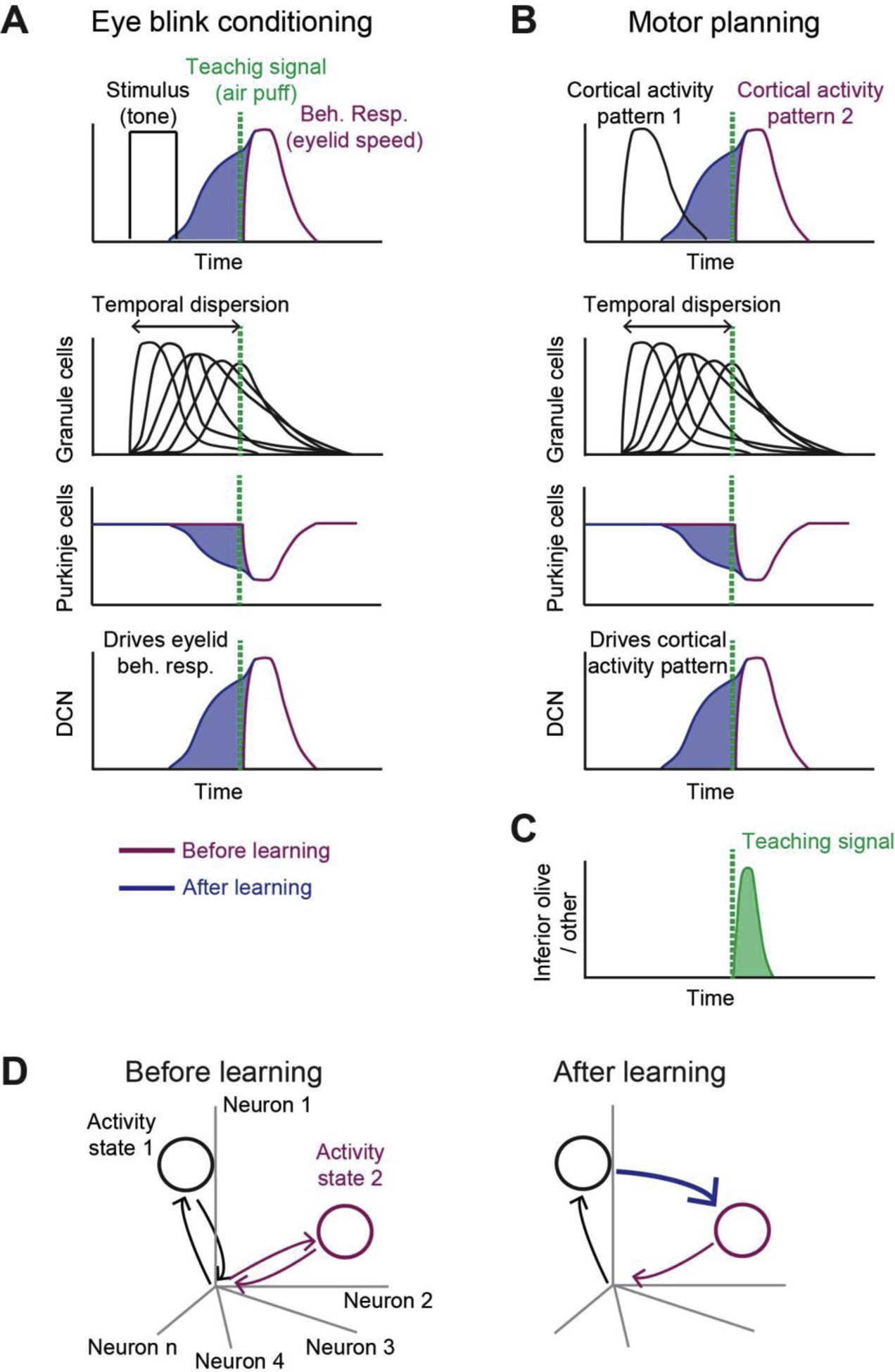Figure 4.

Hypothesis: the cerebellum learns to steer transitions between neocortical activity states. A. Top, during eye blink trace conditioning, a tone (black line) is followed by an aversive air puff (green dashed line), which triggers eyelid closure (purple line). If the tone consistently precedes the air puff, the cerebellum learns to produce anticipatory output (blue) that is triggered by the tone to drive predictive eyelid closure. Bottom, supervised learning mechanism within the cerebellum. The pontine input signaling the tone triggers diverse and temporally dispersed activity in the granule cells [65,66]. The Purkinje cells learn to reweigh the granule cell input via cerebellar LTD, guided by the teaching signal from the inferior olive (green), to produce timed suppression of Purkinje cells in anticipation of the air puff (blue). Once learned, the tone-triggered decrease in Purkinje cell responses disinhibits the deep cerebellar nucleus (DCN) neurons to drive eyelid closure before the air puff. B. Hypothetically, the same supervised learning mechanism in the cerebellum can learn to anticipate transitions between neocortical activity states. If one pattern of neocortical activity is consistently followed by another in conjunction with a teaching signal, the cerebellum may learn to generate predictive responses that drive the second neocortical activity pattern. C. Putative teaching signal that instructs association between neocortical activity patterns. The teaching signal may reflect an unpredicted occurrence of a neocortical activity pattern. A mismatch between the predicted neocortical activity pattern and the actual activity pattern may be represented in the inferior olive. D. Neocortical activity patterns correspond to specific states in activity space. The predictive responses learned by the cerebellum form new transitions between activity states.
